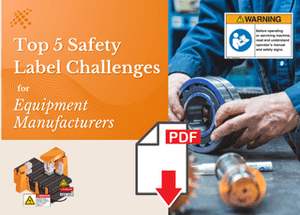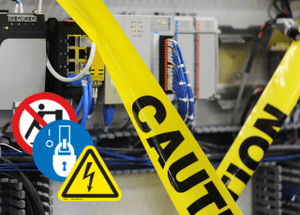Fire and Burn Safety Tips

Across the country, businesses rely on high-risk equipment to operate and provide services. This equipment can cause severe burns to workers, which is why safety and prevention are key. Provided by the American Burn Association (ABA), the focus of this year’s National Burn Awareness Week (February 5-11, 2023) is “Scalds: Hot Liquids Burn Like Fire”. Held the first full week of February, the campaign is aimed at increasing awareness of the frequency and causes of household and workplace burn injuries – important for accident prevention for both consumers and workers. The goal of every burn awareness week is to educate about types of burns and safety protocols to help prevent them, in addition to drawing attention to big picture burn-related safety tips and response plans.
Dangers of Burn Hazards
Throughout the nation, an estimated 486,000 burn injuries occur, with 10% of
them happening in the workplace. Of these, approximately 40,000 people were
hospitalized due to burns. In 2019, 3,704 deaths occurred from fire and smoke inhalation
with another 40,000 people being treated in hospitals for burn-related
injuries.
Equipment manufacturers have a duty to warn, a responsibility to adequately warn about hazards related to their products or machinery. Burn, electrical and arc flash-related hazards have long been a top concern. At the same time, in line with this year’s burn awareness campaign theme, it’s also worth noting the significance of scalding related burns. According to FEMA, as of 2019, scalds were responsible for 32% of burns nationwide, with a steady increase year after year since the early 2000s.
Types of Burns
Though scalding burns are the focus of this year’s awareness week, there is
more than one type of burn that can occur. As such, burn awareness begins with
understanding the different types, including:
- Chemical burns: Caustic and corrosive materials and solutions can burn the skin and cause chemical burns. These are high risk burns for those working in laboratories, manufacturing plants, and cleaning services.
- Cold burns: Exposing the skin to ice or extremely cold objects can result in an ice or cold burn. This is also called frostbite.
- Contact burns: Touching a hot object causes this type of burn. This could be touching a hot piece of machinery or a burning pipe.
- Friction burns: This occurs when an object rubs against your skin and removes some of the skin. The resulting injury looks like a cross between a heat burn and a scrape.
- Scald burns: Heat is the source of these burns, also known as thermal burns. These can occur from contact with hot substances, such as liquids, fire, and explosives. Personal protective equipment (PPE), such as goggles, gloves, and aprons can prevent against these injuries.
- Ultraviolet Radiation (UV) exposure burns: Commonly called sunburns, this occurs when sunlight burns the skin from exposure outdoors.
- Electrical burns: These burns are caused by shocks from high-voltage equipment and can be a very real danger to your employees. Electrical burn injuries occur when a highly energized current runs through the body due to contact with a power source. Resulting injuries occur due to either the flow of current through the body, arc flash or clothing that catches on fire. Injuries range from outward thermal burns to severe internal organ and tissue damage, and even loss of life. It’s important to note that outward burns do not accurately predict the extent of potential internal injuries. These types of injuries can be minimized with proper lockout/tagout procedures, accompanied with proper visual warnings, and PPE.
Degrees of Burns
If someone is burned, the burn injury falls into a classification, which helps
medical professionals know how to identify and treat the injury. There are four
main classifications of burns, called burn degrees:
- First-degree burns: This degree burns the outermost layer of skin and is generally red. These hurt, but there are no blisters.
- Second-degree burns: With this degree, the outer layer and the dermis are burned. The skin will turn red and it may appear swollen and shiny with blisters on the burned area. Depending on how deep the burn is, there may be scarring.
- Third-degree burns: Two layers of skin are completely burned in this classification of burn injury. Nerves are damaged, which means you do not feel pain. This burn also looks different, as it turns the skin white, yellow, brown, or black rather than red.
- Fourth-degree burns: These are often forgotten about, but they are the most severe and may be life-threatening. Not only are the layers of skin damaged, but so are the muscles, tendons, and bones beneath the burn.
Causes of Burns
Burns are not caused by one single source. Here are a few common causes that
lead to the burns detailed above:
- Cooking
- Harsh cleaning chemicals
- Electricity
- Hot objects and liquids
- Fires and explosives
- Rubbing against objects
- Contact with ice
- The sun
- Smoking
- Equipment failure
Tips for Preventing Burns
The safety of employees and equipment users always comes first. Take precaution
and implement preventative measures before an issue arises.
Important burn prevention tips include conducting thorough machine risk assessments and electrical safety audits to understand potential dangers and mitigate risks. Practicing good housekeeping in your facility, especially related to flammable and combustible materials and the quality of burn-related personal protective equipment (PPE), is also essential. In addition, it is critical to observe all electrical codes and to establish thorough safety procedures and train employees regularly on them, such as lockout/tagout safety programs.
It's also imperative to include burn hazard safety labels on your equipment and safety signs and tags in your workplace to warn employees about the dangers that may be present from fires and burns, and the steps to take if an incident occurs. This can include warnings about hot surfaces, arc flash hazards or the proper PPE to wear to avoid injury, notifications of your company’s safety procedures, as well as egress signs in case of a fire emergency.
How to Respond to a Burn Injury in the Workplace
First aid for the various types and degrees of burns can be different, which is
why you should have mandatory first aid training. Also, make sure your employees
know to immediately call for emergency services if an incident occurs and have
the numbers clearly positioned throughout your work site.
Prepare Your Products and Workplace for Burn Safety
Burn hazards can put people – from the users of the equipment you manufacture
to employees in your facility – in danger. National Burn Awareness Week is the
perfect time to review your workplace safety policies and machinery warnings in
relation to burn hazards. Our team is here to help!
This blog was originally posted in January 2019 and has been updated with new information throughout.



